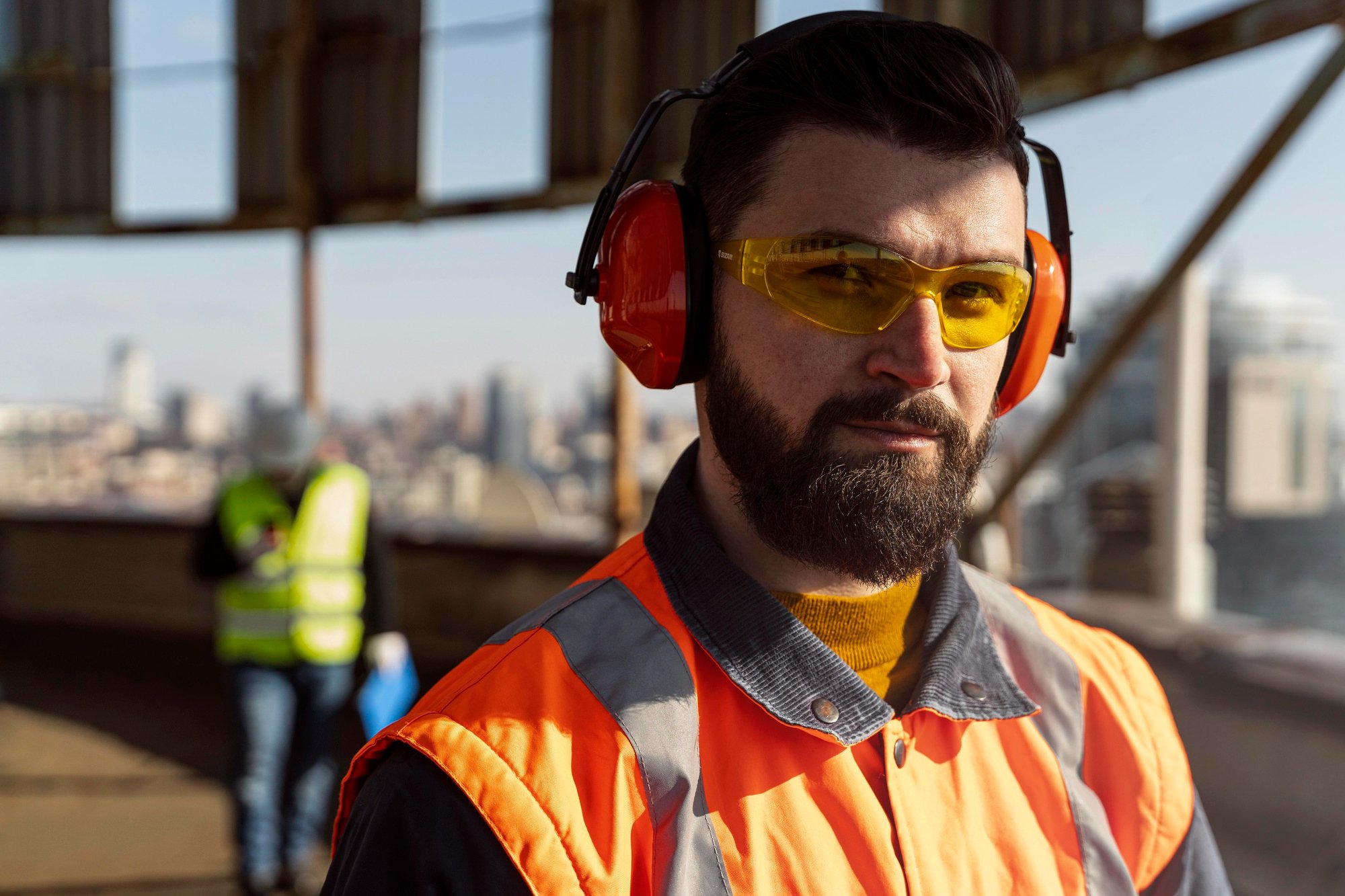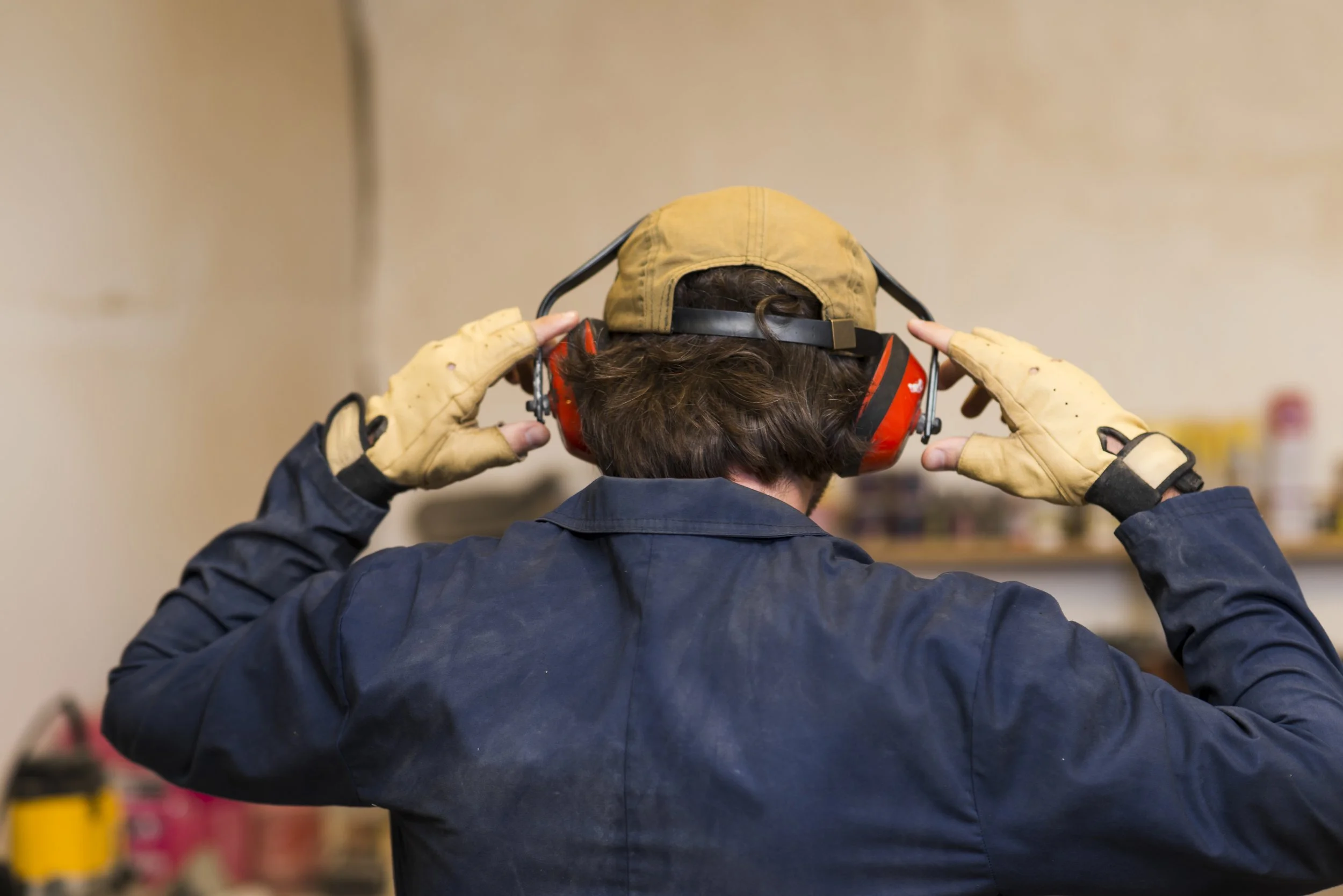
Ear Protection
Ear Protection 101: NRR, Fit, and Why It Matters
Noise damage is permanent—but preventable. Whether you're on stage or in the crowd, choosing the right earplugs (foam, custom, or filtered) is key to protecting your hearing.
-
Custom earplugs are molded to your ears, offering better comfort, a more reliable seal, and long-term use, though they cost more upfront. OTC plugs are cheaper and come in standard sizes, but may be less comfortable and effective, with shorter lifespans.
-
Passive Protection
Blocks sound using foam, silicone, or other materials
Reliable and affordable
No batteries or electronics needed
Great for consistent loud environments like concerts or construction sites
Active Protection
Uses electronics to adjust sound in real time
Lets soft sounds (like speech or music detail) pass through while reducing loud spikes
Found in tactical headsets and high-end musician gear
Requires batteries or charging
More expensive
-
Foam earplugs should be rolled into a tight cylinder before use. With your opposite hand, gently pull your ear up and back to straighten the ear canal, then insert the plug deeply and hold it in place until it fully expands to form a seal.
Reusable or flanged plugs are inserted with a gentle twist. Make sure all flanges are properly seated inside the ear canal for a secure fit, and remember to clean them regularly to keep them effective and safe.
Musician filters (also called high-fidelity plugs) are designed to reduce sound evenly across all frequencies, making them ideal for live music. They’re available in different dB reduction levels and fit similarly to reusable plugs. Some versions are custom-molded for maximum comfort and performance.
What Is NRR?
NRR means Noise Reduction Rating. It tells you how much a hearing protector can lower loud sounds, measured in decibels (dB), when used properly.
Higher NRR = greater potential protection
Foam plugs: NRR 22–33 dB
Earmuffs: NRR 20–30 dB
Real-world performance is usually lower than stated NRR, due to imperfect fit or user error
🧠 Important: A device must be fitted correctly to provide its full benefit.

Don't Wait—Protect Your Ears Today
You only get one set of ears—protect them well. With the right gear, you can enjoy powerful, clear sound without putting your hearing at risk.
Want help choosing the best ear protection for your needs?
[Contact Us] or visit our [Ear Protection Resource Hub].
They understand the tension between stage volume and hearing health—because they’ve been in both clinics and green rooms.
“It’s not about turning the volume down—it’s about turning the danger down.” – Dr. Michael Santucci
Explore their cutting-edge protection and monitoring systems at:
👉 sensophonics.com
Hear the Sound, Miss the Meaning?
You might have hidden hearing loss.
That “temporary” muffled or ringing feeling after loud noise doesn’t always go away—it can cause lasting damage to the nerves in your ears. Even if everything seems normal, you might start having trouble hearing clearly in noisy places or enjoying music like before. This is known as hidden hearing loss, and it's more common than you think.
And if your hearing does not come back, that is called Sudden Sensorineural Hearing Loss (SSNHL) which is an ENT emergency that is often not treated in time out of unawareness.
-
Q1: Can you UNDERSTAND everything people are saying in a loud restaurant? Or are you missing parts of conversations, like the punchline of a joke?
Q2: Have you ever experienced sudden muffled hearing and ringing after a loud concert? How about Dizziness, Vertigo, Anxiety, Depression?
Q3: Do you know what Decibel Level at which sound become toxic at which point OSHA requires earplugs? Is it: 70 dB 85 dB 100 dB or 120 dB
Q4: Considering your current level of noise exposure, do you think hearing aids are inevitable for you? How old do you plan to be when you need them?
Q5: If there were a way to prevent this damage, would you want to know?

Spotlight: Sensophonics – Science-Driven Sound Safety
Founded by audiologist Dr. Michael Santucci, Sensophonics leads the way in custom hearing protection for musicians. They offer custom-molded earplugs with flat-frequency filters, hearing-safe in-ear monitors, and high-fidelity solutions trusted by top touring artists around the world.



